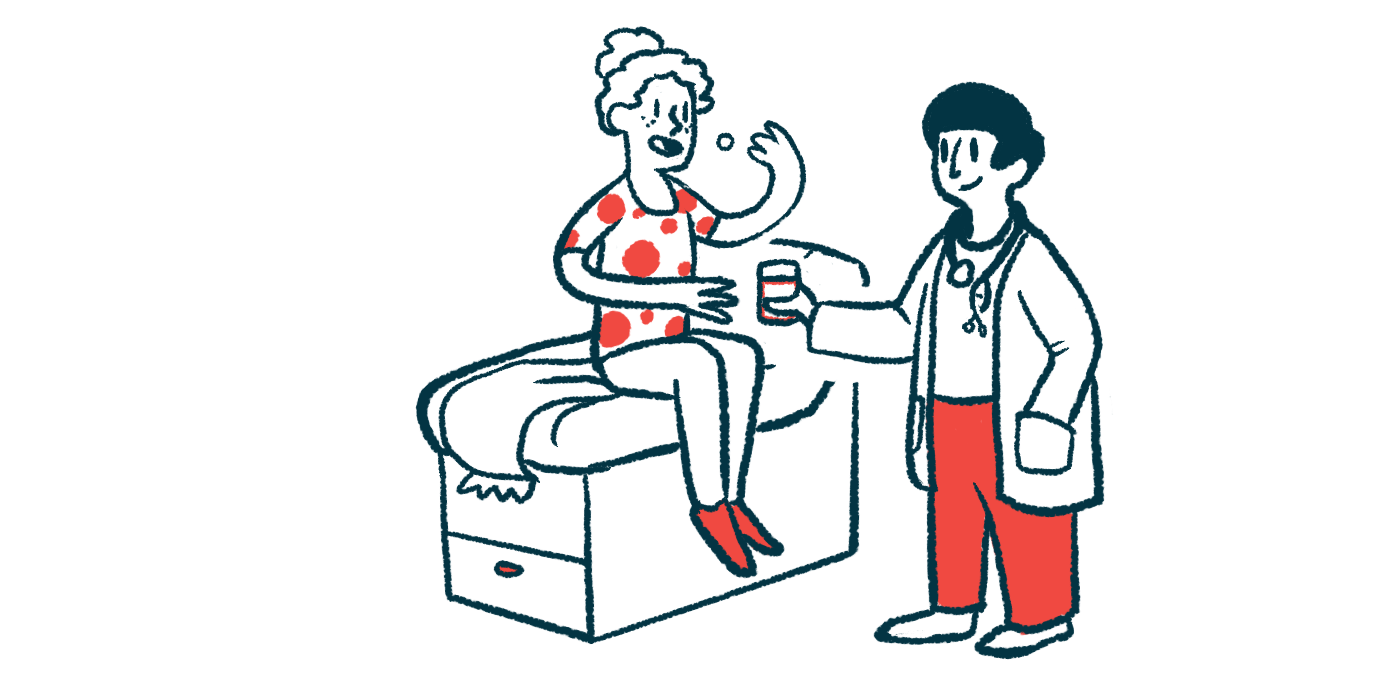Firdapse boosts muscle strength in Japanese adults with LEMS: Study
A Phase 3 clinical trial evaluated the therapy's safety and efficacy
Written by |

Up to a year of treatment with Firdapse (amifampridine) was well tolerated, improved muscle strength, and eased symptoms in Japanese adults with Lambert-Eaton myasthenic syndrome (LEMS), a small clinical study shows.
“This study revealed the long-term efficacy and tolerability of [Firdapse] in Japanese adults with LEMS,” the study’s researchers wrote. The study, “Long-term Efficacy and Safety of Amifampridine Phosphate (Firdapse) in Japanese Patients with Lambert-Eaton Myasthenic Syndrome,” was published in J-STAGE Internal Medicine.
An autoimmune disease, LEMS is caused by an abnormal immune attack on proteins called voltage-gated calcium channels (VGCCs), which are critical for signaling between nerve and muscle cells. The attacks block such signaling, weakening muscles over time and leading to muscle weakness and fatigue.
Firdapse’s active ingredient is amifampridine, which helps any remaining VGCCs stay open to improve signaling and ease symptoms. It’s approved in several countries for treating LEMS symptoms, including the U.S., Canada, the European Union, and Japan. A generic version recently won tentative approval in the U.S., but it’s not yet available.
Testing Firdapse safety, effectiveness
DyDo Pharma, which is commercializing Firdapse with Catalyst Pharmaceuticals, launched a multicenter Phase 3 clinical trial, called LMS-005, that evaluated the therapy’s safety and efficacy in 12 Japanese adults with LEMS. While nearly all had taken other medications for LEMS, none had used Firdapse.
The participants started Firdapse at 15 mg/day and the dose was increased every three to four days until the optimal dose for each patient was reached based on their response and tolerability. The optimal dose was given for seven days and then up to an additional year.
The therapy’s efficacy was assessed in 10 participants (seven men, three women), with the results showing that seven days of optimal treatment improved muscle strength, which was indicated by a decrease in mean scores on the quantitative myasthenia gravis (QMG) assessment (13.2 vs. 8). This meant the study met its main goal.
Individually, all the patients had lower overall QMG scores after treatment, indicating symptom lessening, with 8 of the 10 showing a QMG score drop of at least 3 points. Likewise, Firdapse improved muscle strength in the arms, as reflected by a mean 1.4-point drop in QMG scores, and in the legs by a mean 0.9-point decrease, meeting some of the secondary goals.
The Subject Global Impression (SGI) scale, where patients rate their impression of the treatment’s efficacy, improved with Firdapse, with mean scores rising from 2.8 before treatment to 4.5 after seven days. The Clinical Global Impression Improvement (CGI-I) scores, a global physician-rated scale for symptom change, also improved after seven days, as indicated by a mean drop from about 4 to 2.5 points.
Positive changes in QMG, SGI, and CGI-I scores were generally maintained for up to a year.
Some patients whose symptoms worsened beyond seven days received additional therapy, including intravenous immunoglobulin. After this, the QMG scores returned to their pre-worsening level, suggesting that “appropriate additional treatment is necessary with disease fluctuations, even when treated with [Firdapse],” the researchers wrote.
The treatment’s safety was reported in 12 patients, with five (41.7%) having 10 treatment-related adverse events, including two events of abnormal sense of touch in two patients, one event each of pins and needles, sensory disturbance, abdominal pain, constipation, frequent bowel movements, frequent urination, and excessive sweating in one patient. The treatment was discontinued in one patient due to difficulty swallowing, but it wasn’t related to the therapy, according to the researchers. No changes were seen in laboratory tests, vital signs, or physical examination findings.
“The present study demonstrated that [Firdapse] is useful in the treatment of LEMS when [gradually increased] to an effective dose,” the researchers wrote. “It is well tolerated in Japanese adults and provides an important option for improving muscle strength in patients with LEMS.”



